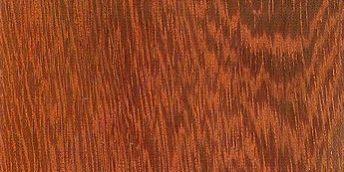Kekatong: A Heavy Hardwood for Robust Construction
**Introduction**
Kekatong, the standard Malaysian name for timber from the Cynometra species (Leguminosae family), is a robust and versatile hardwood. It is known by various vernacular names such as belangan, belangkan, katong-katong, and kekatong laut in Peninsular Malaysia, and katong-katong in Sabah. Major species include Cynometra elmeri, C. iripa, C. malaccensis, C. mirabilis, and C. ramiflora. The sapwood is lighter than the heartwood, which ranges from red-brown to claret-red with lighter streaks.
Internationally, it is also referred to as Chom prinh (Cambodia), Moivi and Tongatu (Fiji), Ping (India), Kateng and Kepel (Indonesia), Mai li (Laos), Myinga (Myanmar), Balitbitan and Oringen (Philippines), and Katong and Mang Kha (Thailand).
**Density**
Kekatong is classified as a Heavy Hardwood with an air-dry density ranging from 880 to 1,155 kg/m³.
**Natural Durability**
Based on standard graveyard tests, untreated kekatong is classified as moderately durable under Malaysian conditions. Untreated specimens of C. malaccensis have an average service life of about 4.2 years (Mohd. Dahlan & Tam, in press).
**Preservative Treatment**
Kekatong is very difficult to treat with preservatives.
**Texture**
The timber has a moderately fine and uneven texture, with a grain that is straight to shallowly interlocked.
**Strength Properties**
Kekatong falls into Strength Group A (Engku, 1988b) or SG 2 (MS 544: Part 2: 2001).
**Strength Properties of Kekatong (C. malaccensis)**
| Test Condition | Modulus of Elasticity (MPa) | Modulus of Rupture (MPa) | Compression Parallel to Grain (MPa) | Compression Perpendicular to Grain (MPa) | Shear Strength (MPa) |
|—————-|—————————–|—————————|————————————-|——————————————|———————–|
| Green | 17,000 | 105 | 56.0 | 11.03 | 13.2 |
| Air dry | 18,400 | 135 | 67.0 | 11.38 | 15.6 |
**Machining Properties**
The workability of kekatong varies from easy to difficult. It is easy to difficult to resaw and difficult to cross-cut. Planing is easy to slightly difficult, often producing a moderately smooth surface.
**Machining Properties of Kekatong (C. malaccensis)**
| Test Condition | Sawing | Planing | Boring | Turning | Re-sawing | Cross Cutting | Ease of Planing | Quality of Finish | Ease of Boring | Quality of Finish | Ease of Turning | Quality of Finish |
|—————-|——–|———|——–|———|———–|—————|—————–|——————-|—————-|——————-|—————-|——————-|
| Green | Easy | Difficult | Easy | Moderately Smooth | Easy | Smooth to Rough | – | – | – | – | – | – |
| Air dry | Difficult | Difficult | Slightly Difficult | Moderately Smooth | Slightly Difficult | Moderately Smooth | Difficult | Moderately Smooth | – | – | – | – |
**Nailing Property**
Kekatong timber has poor nailing properties.
**Air Drying**
The timber seasons moderately slowly, with minimal degrade except for some end-checking. Thirteen mm thick boards take 3 months to air dry, while 38 mm thick boards take 5 months.
**Kiln-Drying**
Kiln Schedule B is recommended for kekatong. Twenty-five mm thick boards can be kiln-dried in 8 days.
**Kiln Schedule B**
| Moisture Content (%) | Temperature (Dry Bulb) | Temperature (Wet Bulb) | Relative Humidity (%) (approx.) |
|———————-|————————|————————|——————————–|
| Green | 105 °F (40.5 °C) | 101 °F (38.0 °C) | 85 |
| 40 | 105 °F (40.5 °C) | 99 °F (37.0 °C) | 80 |
| 30 | 110 °F (43.5 °C) | 102 °F (39.0 °C) | 75 |
| 25 | 115 °F (46.0 °C) | 105 °F (40.5 °C) | 70 |
| 20 | 130 °F (54.5 °C) | 115 °F (46.0 °C) | 60 |
| 15 | 140 °F (60.0 °C) | 118 °F (47.5 °C) | 50 |
**Shrinkage**
Kekatong has a shrinkage rate of 1.6% radially and 2.7% tangentially.
**Defects**
Common defects in kekatong logs include pin holes, end splitting, and end checks. Occasional spongy heart at the center of the logs has also been observed. The sapwood is very susceptible to powder-post beetle attacks (Burgess, 1966).
**Uses**
Kekatong timber is suitable for:
– Heavy construction under cover
– Telegraphic and power transmission posts and cross arms
– Beams, posts, joists, and rafters
– Door and window frames and sills
– Flooring (heavy traffic)
– Fender supports
– Railway sleepers (when treated)
– Cooling tower structural members
– Staircase components (apron linings, balustrades, newels, and stringers)
– Vehicle bodies (framework and floorboards)
– Pallets (heavy duty and permanent types)
– Tool handles (impact)
– Laboratory benches
Explore the versatility and strength of kekatong timber for your construction and industrial needs at Creatimber. Discover how this robust hardwood can enhance your projects with its durability and excellent performance.






